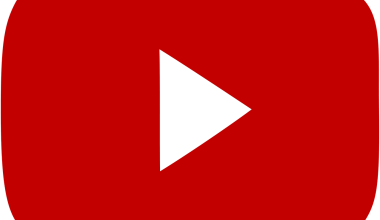YouTube Music is one of the most popular platforms for music streaming today. It’s an excellent place for independent artists to showcase their talent and connect with a global audience. Many believe that uploading music to platforms like YouTube Music requires a distributor, but that’s not entirely true. If you’re an artist wondering how to share your music on YouTube Music without a distributor, this guide will help you navigate the process step by step.
Sharing your music without a distributor might seem challenging, but with the right approach, you can make it work. This blog will provide practical tips, tricks, and methods to ensure your tracks are easily accessible and stand out to your listeners.
Why Choose YouTube Music?
YouTube Music offers unparalleled accessibility and a massive user base. For independent artists, it’s not just about streaming; it’s about visibility, engagement, and creating a loyal fan base. The platform integrates seamlessly with YouTube, so your music videos, audio tracks, and related content can all coexist in one place.
Uploading your music directly to YouTube Music is also cost-effective. Distributors charge fees or take a percentage of your royalties, but bypassing them allows you to keep full control over your earnings.
Can You Really Upload Music Without a Distributor?
The short answer is yes. While most mainstream streaming platforms require a distributor to handle licensing and royalties, YouTube Music has unique features that make it possible for independent artists to upload music without third-party services. By leveraging YouTube’s content creation tools and resources, you can achieve your goals independently.
1. Create a YouTube Channel
Start by setting up a YouTube channel dedicated to your music. Use your artist name to ensure it’s easily recognizable. Include a high-quality profile picture, banner, and a well-written description that explains your style and journey.
2. Optimize Your Channel for Music Content
YouTube offers a feature called an Official Artist Channel (OAC). This merges all your content into a single channel, making it easier for fans to find you. Apply for an OAC through YouTube once you’ve uploaded a few tracks and built some engagement.
3. Upload Your Tracks as Videos
Since YouTube is primarily a video platform, you’ll need to upload your music as videos. Create engaging visuals to accompany your tracks. This could be anything from animated graphics to a static image of your album cover. Use video editing software or online tools to sync your audio with visuals.
4. Enable Monetization
If you meet YouTube’s eligibility criteria, such as having 1,000 subscribers and 4,000 watch hours, you can monetize your channel. This way, you earn from ads displayed on your videos.
5. Leverage YouTube Music’s Content ID System
YouTube’s Content ID system helps protect your music and ensures you receive royalties when your tracks are used by others. Set up Content ID through YouTube Studio to claim ownership of your work.
Tips to Maximize Your Reach
1. Engage Your Audience Regularly
Consistency is key to growing your presence on YouTube Music. Upload new music, interact with your fans in the comments, and create content that resonates with your audience.
2. Collaborate with Other Creators
Partner with other musicians or YouTubers to expand your reach. Collaborative videos and cross-promotions introduce your music to new audiences.
Share your videos on platforms like Instagram, Twitter, and Facebook to drive traffic to your YouTube channel. Use relevant hashtags and interact with your followers to build a loyal community.
Optimize your video titles, descriptions, and tags with relevant keywords. This helps your videos rank higher in search results and appear in recommended sections.
5. Analyze Your Performance
Use YouTube Analytics to monitor your videos’ performance. Pay attention to viewer demographics, watch time, and engagement rates to refine your content strategy.
Pros and Cons of Not Using a Distributor
While skipping a distributor has its advantages, it also comes with challenges.
Pros:
- Full control over your content and earnings.
- Freedom to upload and manage music on your terms.
- No need to pay distributor fees or share royalties.
Cons:
- Additional responsibilities for licensing and rights management.
- Limited access to other streaming platforms.
- Requires more effort in promotion and audience building.
The Role of YouTube Music in Your Music Career
By sharing your music on YouTube Music without a distributor, you establish a direct connection with your audience. This approach fosters authenticity and gives you complete creative freedom. Additionally, it enables you to understand your audience better through direct engagement and analytics
Conclusion
Sharing your music on YouTube Music without a distributor is not just possible—it’s empowering. By taking control of your music and embracing YouTube’s tools, you can build a thriving career independently. Start today, and let the world discover your talent.
Remember, the journey to success may not be easy, but it’s incredibly rewarding. With consistency, creativity, and a strategic approach, your music can reach listeners worldwide.
For further reading, explore these related articles:
- Release Your Track on JioSaavn Quickly: The Ultimate Guide for Artists
- Release Your Track on JioSaavn Without a Label
For additional resources on music marketing and distribution, visit DMT RECORDS PRIVATE LIMITED.






